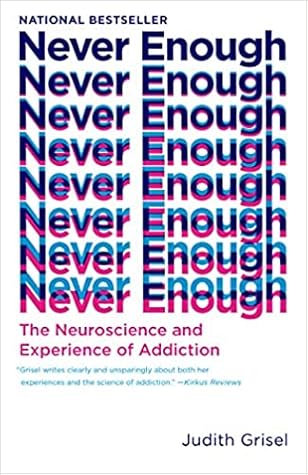More on this book
Community
Kindle Notes & Highlights
Read between
December 31, 2020 - January 4, 2021
Many of these polymorphisms are substitutions in a single nucleotide, akin to replacing a letter in this chapter.
The relatively new field of epigenetics is just getting under way, but it is thought that some of our parents’ and grandparents’ experiences are imprinted in our cells this way in order to adapt us for similar conditions.
This is the deeper story of inheritance. The sequence of nucleotides in each of our cells reflects our long human evolution as well as the particular history of our families, including both marriages and mutations, while the epigenome hovering above it “remembers” the experiences of our ancestors the way ruts in the road indicate where wheels have passed.
The old view that equated dopamine with a feeling of pleasure is too simplistic. Rather, high dopamine tone correlates with enhanced sensitivity to potentially rewarding experiences, as if the message concerning something of potential value were being delivered at a higher volume and essentially drowning out drawbacks, as we might see in any person developing addiction including to drugs, but also when they are gambling or scheduling a vacation to a new spot.
One of my favorite aphorisms reframes the dilemma by suggesting that the aim of science is not to open a door to infinite wisdom but rather to set a limit on infinite ignorance.
Do not weep; do not wax indignant. Understand. —Spinoza (1632–1677)
dark matter,
rotten pearls in the strand.
More than ever before in our evolutionary history, we possess a keen awareness of widespread tragedy and suffering in the world. This is the painful context in which our attempts to avert and deny the burden of consciousness have grown more and more desperate and widespread.
While surely there were individual cases of excessive drug use in the past, the epidemic incidence of addiction in modern society is dependent on cultural norms that foster, or at least disregard, isolation. If not a requirement, the tendency to use alone is an index of abuse, as the telescoping of activities and friends toward ensuring the ability to imbibe freely goes hand in hand with developing problems.
While surely there were individual cases of excessive drug use in the past, the epidemic incidence of addiction in modern society is dependent on cultural norms that foster, or at least disregard, isolation. If not a requirement, the tendency to use alone is an index of abuse, as the telescoping of activities and friends toward ensuring the ability to imbibe freely goes hand in hand with developing problems.
how does a young adult deal with having to choose between a career that earns a lot of money but depends on exploitation and a career working as one of the exploited? What must it feel like to birth children in a world that doesn’t really cherish them? Or to be housed at the end of our days, poor and sick, in warehouses designed just for this purpose? What’s really hard to imagine is how anybody wouldn’t pick up, faced with realities like these.
It is not heroin, alcohol, nicotine, or cocaine that makes one an addict; it is the drive to escape from reality.
But the insistence on starting and ending within an addict’s head is not only misguided but insidious.
most addicts cross over into uncontrolled use in plain sight, without anyone—especially themselves—realizing until it is too late.


